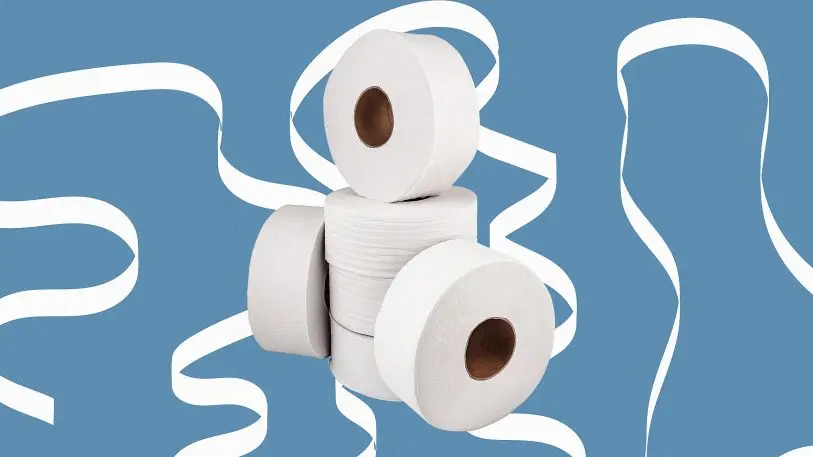Weeks into the coronavirus pandemic, many toilet paper shelves are still empty, and suppliers aren’t sure when rolls will be available again. But as Americans need bathroom tissue for at-home use, there’s a supply chain going unused: the kind of toilet paper stocked by offices, schools, sports arenas, and other public places that now are empty. This toilet paper is often more sustainably made than the TP you buy yourself, so getting it to consumers would be an environmentally friendly way to fill that toilet-tissue need.
“One of the things that people don’t understand is that there is this big difference between the products that they’ll find on grocery store shelves and the products they probably use in their workplaces and in [other] public restrooms,” says Shelley Vinyard, the Boreal Corporate Campaign Manager for the Natural Resources Defense Council.
Vinyard’s work focuses on engaging the marketplace in efforts to protect Canada’s boreal forest, which spans more than one billion acres, is the most carbon-dense forest in the world, and is the largest intact forest—though all those facts are being threatened by the toilet paper industry. Many toilet paper brands in the U.S. that consumers can buy themselves, including Charmin and Quilted Northern, Vinyard says, are made of 100% virgin forest fiber, meaning trees within that boreal forest are cut down to make toilet paper. (The Forest Products Association of Canada, a paper products trade group, contends that these practices are sustainable.)

“The product that is created for businesses, often called the professional line of tissue products, is often made much more sustainably than products that are available on store shelves, and often have a lot more recycled content in them,” she says. “That’s really good for relieving pressure on the world’s remaining intact forests.” Vinyard says that toilet paper manufacturers who do use 100% virgin forest fiber will claim it’s the only way to produce their products, but that there are “plenty of soft and functional tissue brands out there” made from more sustainable sources.
One of the biggest challenges for consumers during the COVID-19 pandemic has been supply chain issues, which aren’t equipped to bring food usually sold to restaurants right to people, or toilet paper stocked by businesses to individuals. But throughout the coronavirus crisis, companies have adapted, turning their factories into mask-producing facilities and finding ways to deliver produce usually reserved for restaurants to regular people instead. Why can’t companies that usually supply toilet paper to public spaces do the same?
“There is this opportunity where Americans are having trouble finding consumer brands on their shelves, and ostensibly there are tissue products that aren’t being used in businesses,” Vinyard says. “What we want to see happen is for tissue companies to figure out how to get that supply to consumers directly, which would both give people more options and provide them with a more sustainable option, as well.”
Georgia-Pacific, one of the biggest manufacturers of at-home tissue products—including brands Angel Soft, Brawny, and Quilted Northern—expects a 40% increase in at-home toilet paper use due to people staying at home 24/7. That would add stress to the burden the boreal forest already bears because of the tissue industry. As we’re dealing with one crisis, Vinyard says, we don’t want to exacerbate another—the climate crisis.
Professional line toilet paper hasn’t earned a lot of praise for being the softest or strongest option. You’re probably not missing your office bathroom experiences at all, compared to the TP you have on hand at home. But during a shortage, the priority isn’t to get people the plushiest toilet paper, it’s about getting people any toilet paper at all, so they can be clean and healthy. “There are two different issues here. One is something that we’ve been advocating for long before the pandemic, and the other is addressing a critical need that we have right now,” Vinyard says. “What consumers need right now is access to tissue products. That’s where tissue manufacturers that make professional line toilet paper can help and step in right now.”
At the same time, she adds, the NRDC would like to see tissue manufacturers use this as an opportunity to add more recycled content and sustainable fibers into the brands that typically fill consumer shelves. “We don’t see it as an either or, we believe it can be both,” she says. “Products that consumers buy shouldn’t be made at the cost of climate critical forests.”
Some manufacturers have started selling directly from their warehouses, and some local restaurants and other businesses are selling their own toilet paper stock to bolster their financial situations. The NRDC is trying to get more of those professional line toilet paper manufacturers to make the switch directly to consumers, and to do so as quickly as possible to solve that immediate need, and to help ensure a more sustainable future. They may have to figure out how to ship and sell industrial-size rolls, but Vinyard doesn’t see that being too much of an issue.
“We’re seeing story after story of companies who are completing retooling their manufacturing plants and supply chains in order to provide critical services to Americans and to the world, and that is just a clear sign that this is possible,” she says. “Compared to turning an auto manufacturing plant into a ventilator producing one, solving the supply chain issue of getting professional line toilet paper to consumers seems a lot more straightforward.”
Recognize your brand’s excellence by applying to this year’s Brands That Matter Awards before the early-rate deadline, May 3.
